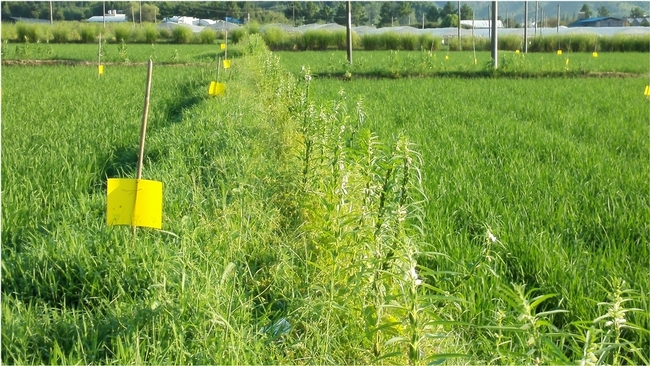- Author: Kathy Keatley Garvey

Newly published research by a seven-member international team of scientists, including UC Davis agricultural entomologist Christian Nansen, points out the dilemma that rice farmers in Bangladesh and elsewhere in Asia are facing: Should we increase fertilizer inputs on our rice fields to maximize yields but then also increase the risk of a pest outbreak by the brown planthopper, Nilaparvata lugens? The planthopper is a major pest of rice in Asia, and it is resistant to many of the available insecticides.
Their research, “Higher Fertilizer Inputs Increase Fitness Traits of Brown Planthopper in Rice,” published July 5 in Scientific Reports of the journal Nature,” is online at http://rdcu.be/tWnE.
“This study underscores the importance of considering crop fertilization as a component of integrated pest management,” said Nansen, whose role included analyzing the data collected in Bangladesh and co-authoring the research paper. “That is, the management practices, including fertilizer regimes, impact the risk of pest outbreaks--just like the risk of humans falling ill is affected by our diet, the same applies to crop plants!”
In their research, conducted in Bangladesh, the scientists investigated the effects of three principal fertilizer components--nitrogen, phosphorus and potassium—on the development of potted rice plants and their effects on fitness traits of the brown planthopper.
“Compared to low fertilizer inputs, high fertilizer treatments induced plant growth but also favored brown planthopper development,” the scientists wrote in their abstraction. “The brown planthopper had higher survival, developed faster, and the intrinsic rate of natural increase was higher on well-fertilized than under-fertilized plants. Among the fertilizer inputs, nitrogen had the strongest effect on the fitness traits of brown planthopper.”
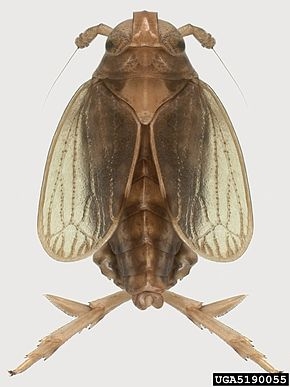
Rice, the primary food stable for more than half of the world's population, is cultivated in at least 114—mostly developing—countries. More than 100 million households in Asia and Africa derive their income from rice production. However, due to the growing population's increased demand for more rice, and limited land for production, yields must increase by at least 70 percent over the next three decades, Nansen said. “In many developing countries, increased use of fertilizers is a response to increase demand for rice.”
Nansen is an assistant professor with the UC Davis Department of Entomology and Entomology, and an affiliate of Bangladesh Rice Institute and the Zhejiang Academy of Agricultural Sciences, Hangzhou, China. He uses his international expertise to zero in on more sustainable farming systems, better food production and fewer pesticides.
Five members of the team are based at the Bangladesh Rice Institute in Gazipur, Bangladesh: M. P. Ali, M. M. Rashid, N. Ahmed, M. Jahan, and K. S. Islam. Co-author J. L. Willers is with the United States Department of Agriculture's Agricultural Research Service, Southern Insect Management Research Unit, Stoneville, Missouri.
Over the past decade, yield losses substantially decreased in Asia due to a widespread outbreak of the brown planthopper, the researchers said.1 For example, the Central Plains of Thailand sustained persistent planthopper outbreaks for 10 consecutive growing seasons from 2008 to 2012, with losses worth $52 million or equivalent to about 173,000 tons in 2010. The same pest was responsible for losses of around 1 million tons in Vietnam in 2007, and resulted in a government freeze on rice exports.

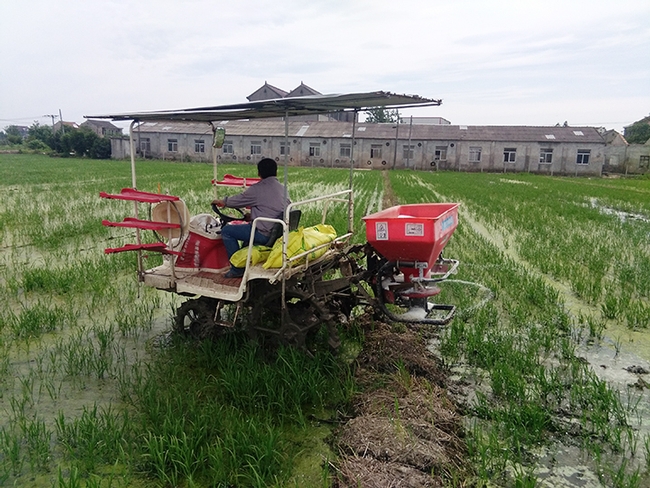
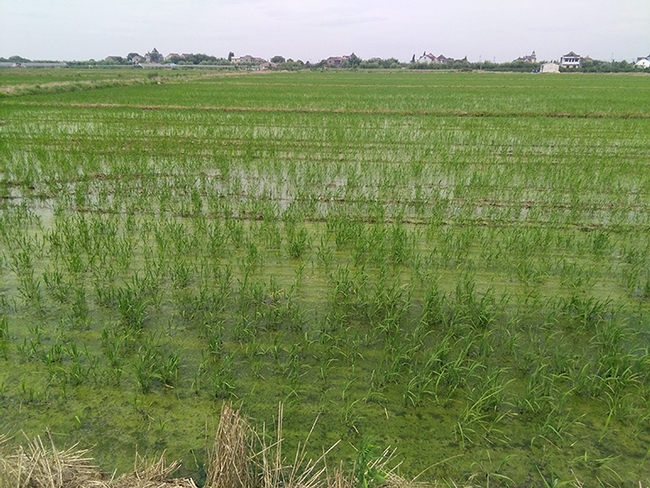
- Author: Kathy Keatley Garvey
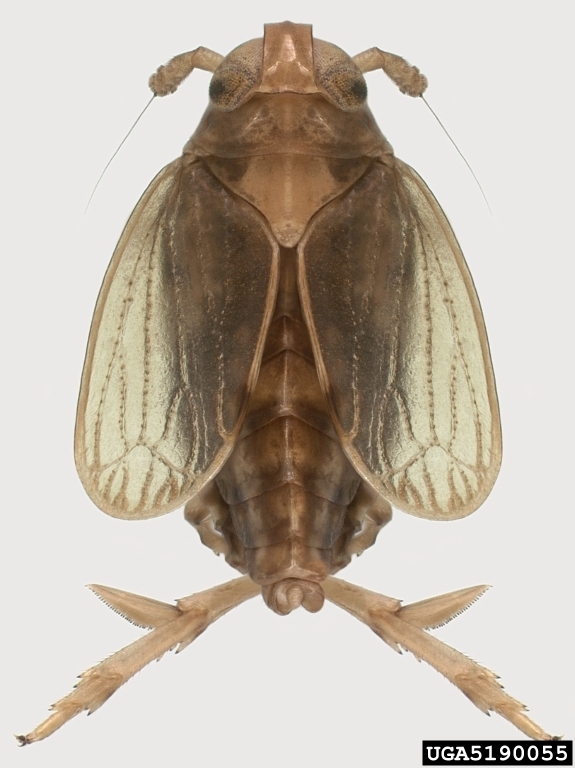
First-of-its-kind research, published in Scientific Reports of the journal Nature by a nine-member team, including UC Davis agricultural entomologist Christian Nansen, indicated that attracting alternative hosts to parasitoids of rice insect pests, can help protect a rice crop. The players: a grass species, a planthopper, and an egg parasitoid.
The field and laboratory work, done in China, targeted the brown planthopper, Nilaparvata lugens, or BPH, the economically most important rice pest in Asia. Results showed that BPH densities were “significantly lower in the rice fields with the banker plant system compared to control rice fields without banker plant system,” the scientists said.
“Many people are familiar with the concept of a ‘trap crop'-- a sacrificial crop which is planted mixed in with or adjacent to an economically important crop and the trap crop serves to manipulate pests away by offering them a more attractive/suitable host alternative,” said Nansen, an assistant professor with the UC Davis Department of Entomology and Nematology. “The use of banker plants in pest management is similar to the use of trap crops, but banker plants typically have multiple ecological functions.”
The researchers planted a grass species, Leersia sayanuka, next to rice. It attracted a planthopper (Nilaparvata muiri), which does not infest rice.

Rice is the stable food of more than 50 percent of the global population, and 60 percent of the Chinese population. However, scientists concur that the world's rice production needs to increase drastically over the next three decades to meet the growing food demand in Asia. Growing concern over BPH outbreaks and higher pesticide usage led to the sustainable pest management study.
Titled “Use of Banker Plant System for Sustainable Management of the Most Important Insect Pest in Rice Fields in China,” the research is unique in that it is the first published study describing the attraction of alternative hosts to parasitoids of rice insect pests. In rice systems, previously published research involved planting sesame as a nectar source to promote the establishment and persistence of a predatory bug; and studies involving parasitoids.
BPH, found only in southeast Asia and Australia, feeds on the rice crop at all stages of plant growth and can also transmit two viruses, rice ragged stunt virus, and rice grassy stunt virus. Damage can commonly result in a 60 percent yield loss. An infestation is often called “hopper burn,” referring to yellow patches that soon turn brown.
Although BPH is not found in the United States, this kind of study “may be an approach to consider in California in the future if insecticide resistance continues to impeded effective insect control,” Nansen said.
Noting the importance of the banker plant system, Nansen said that banker plants “involve promotion of plant diversity to enhance pest self-regulatory ecosystem functions, such as predation and competition, to reduce susceptibility of agricultural crops to native and invasive pests. Also, banker plants “may provide resources, such as shelter, pollen and nectar or alternative preys to improve the establishment and persistence of beneficial insect populations used to control a specific pest.”
The first successful banker plant system, developed in 1977, involved tomato as the banker plant, a parasitoid and a whitefly.
Nansen is affiliated with both UC Davis and the Zhejiang Sustainable Pest and Disease Control, Institute of Plant Protection and Microbiology, Zhejiang Academy of Agricultural Sciences, Hangzhou, China.
Co-authors of the research paper include lead author Zhongxian Lu and colleagues Xusong Zheng, Yanhui Lu, Junce Tian, Hongxing Xu, all of the Zhejiang Sustainable Pest and Disease Control; and Pingyang Zhu, Facheng Zhang and Guihua Chen of the Jinhua (China) Plant Protection Station.
The study was jointly supported by the National Key Research and Development Program of China, Zhejiang Key Research and Development Program, and the Special Fund for Agro-scientific Research in the Public Interest.
